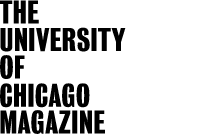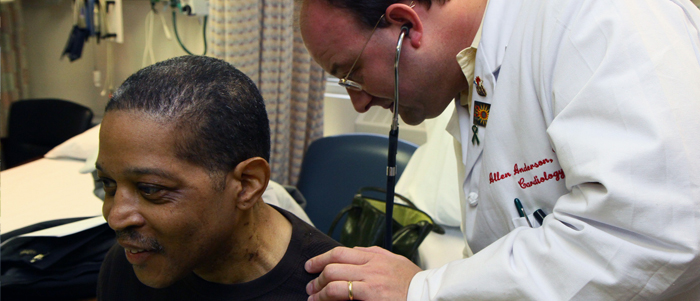Darryl Williams got winded while running a 10K race in Oak Park in 1995. It was puzzling because he was in excellent shape. Over the next five years he had irregular heartbeats and felt strange sensations in his chest. None of the treatments his doctors tried made a difference.
Allen Anderson, associate professor of medicine and director of the University's Advanced Heart Failure Program, met Williams in 2000, when the arrhythmia was becoming life threatening. Anderson diagnosed Williams with cardiac sarcoidosis, an inflammatory heart disease that affects about 18 people per 100,000 annually, and gave him new medication. "We were able to control it for ten years," Anderson says. "He did his part as well, by taking care of himself."
By 2010 the inflammation spread to his liver. Soon the ailing heart and liver put strain on his kidneys. Anderson decided that Williams's only hope was a new heart, liver, and kidney.
The criteria to be considered for a three-organ transplant are stringent. Williams's case was the subject of many meetings with hematologists, surgeons, nutritionists, psychiatrists, social workers, and infectious-disease specialists. "The fundamental question is: are you going to commit organs to this person?" says John Renz, professor of surgery and director of the University's Liver Transplant Program. "You have to look at all aspects of a patient. And you have to feel that you are committing that precious resource well."
Williams, 55, had no other health problems that would complicate his recovery. He had a history of following his doctors' instructions. And he had a large family and many friends to support him. After three months in the hospital waiting for the transplants, Williams was rolled into an operating room March 6.
Valluvan Jeevanandam, professor and chief of cardiac and thoracic surgery, compares multiorgan heart transplants to "walking a tight rope without a net under you. … People don't do well after any open-heart surgery without a good functioning liver. The liver has to filter out toxins and promote coagulation. Similarly, a new liver won't do well without a good heart."
Time is another pressure. Once harvested from the deceased donor, a heart is good for only about five hours. A liver can wait 18 hours, and a kidney can last for up to 48 hours. So the heart goes in first.
The heart transplant, performed by Jeevanandam, was over in about four hours, but the new organ was struggling. "We had to maintain his heart until he could get his liver," Jeevanandam says. The surgeons used inotropes to stimulate the heart and a balloon pump to keep oxygen flowing.
Then Renz's liver-transplant team took over. "When the new liver went in," Renz says, "the heart got better and better."
By the time it was Yolanda Becker's turn to bring in a kidney-transplant team, Williams had been in the operating room for almost 17 hours. Becker, professor of surgery and director of the Kidney and Pancreas Program, has done many multiple-organ transplants. Sometimes it's best, she says, for a heart-transplant patient to recover before attempting to put in a kidney.
But the donor kidney was aging, and the patient was limping along. None of his physicians wanted Williams to have a new heart and liver without a new kidney. "I decided that we would not wait until the patient got stable," Becker says.
She and her team worked fast. The surgery usually takes three to four hours. In this case, a mere 36 minutes passed between the incision and the moment blood began flowing to the new kidney.
After more than 19 hours on the operating table, Williams became the tenth person in the United States—and the fourth at the Medical Center—to have a successful heart, liver, and kidney transplant.
Within a week, Williams said, he felt better than he had in years. By July he reported feeling about 90 percent recovered. His rehabilitation included doctor-recommended aerobic workouts on a treadmill and a recumbent bike, along with strength training that he did on his own.
Once a month he has blood drawn so Anderson, the heart-failure specialist, can make sure Williams's body is not rejecting the heart. After the one-year anniversary, he will require only annual checkups.
Anderson believes that Williams will have no limitations. He will be able to travel, exercise, and do the daily activities he wants to do. "There's a good chance," Anderson says, "that he will have a normal life."










